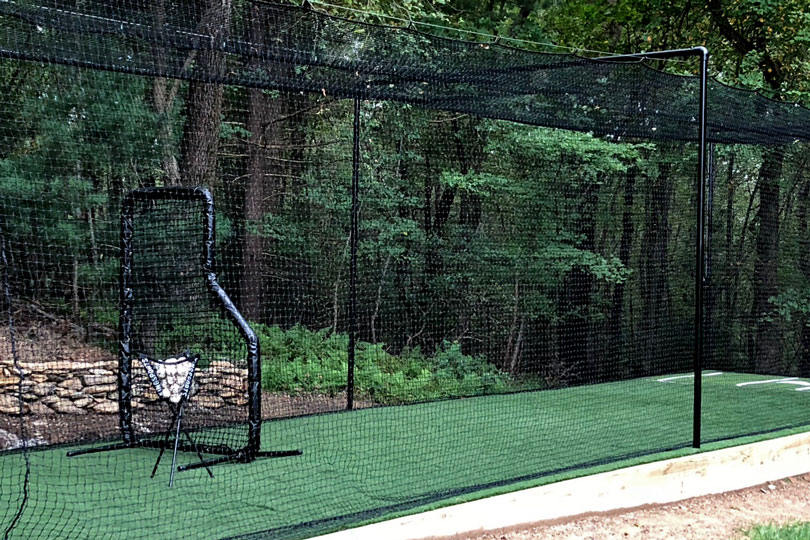A Catcher’s Commitment: How to Maintain Your Backyard Batting Cage

A backyard batting cage is a fantastic investment for any baseball or softball player. It provides a convenient and private space to hone skills, perfect swings, and build confidence without the need for a trip to the local field or a public facility. However, this valuable training tool, exposed to the elements and the constant impact of high-velocity balls, requires dedicated maintenance to ensure it remains safe, functional, and in good condition for years of use. Neglecting this upkeep can lead to premature wear, costly repairs, and a significant drop in its effectiveness. Protecting your investment is a simple process of regular inspection, cleaning, and proactive repairs that will keep your cage in the game for countless seasons.
The most critical component of a Backyard Batting Cages for your Home – Batting Cages Inc.
is it’s netting. The net is what bears the brunt of every hit ball, protecting your home and yard from damage. Over time, sunlight, rain, and fluctuating temperatures can degrade the material, making it brittle and more susceptible to tears. The constant impact from balls can also stretch the fibers and weaken its structural integrity. A well-maintained net, however, can handle these stresses for many years.
The Seasonal Tune-Up: A Routine of Inspection and Cleaning
Spring is the perfect time for a thorough inspection of your batting cage. After a long winter, you should check every inch of the netting for any signs of wear, such as small tears, frayed spots, or stretched areas. These small problems, if left unaddressed, can quickly turn into major holes. It is best to use a good quality zip tie or a repair kit with durable twine to mend any tears as soon as you find them. A little proactive repair can save you the cost of a full net replacement down the line.
Cleaning is another vital part of seasonal maintenance. The netting can accumulate a significant amount of dirt, dust, pollen, and even mildew over the course of a year. To clean it, you can use a simple mixture of warm water and a mild detergent or a specialized net cleaner. Use a soft brush or a pressure washer on a low setting to gently wash the netting. A high-pressure washer can damage the fibers, so be careful. This cleaning process not only improves the appearance of your cage but also removes abrasive particles that can accelerate wear on the material.
Protecting the Frame: The Unsung Hero
While the netting gets all the glory, the frame of your batting cage is the unsung hero that holds everything together. Most backyard cages use a frame made of either steel or fiberglass poles. Steel frames are durable but are susceptible to rust, especially in humid or rainy climates. Fiberglass frames are more flexible and rust-proof but can become brittle over time.
To maintain a steel frame, you should regularly inspect the joints and poles for any signs of rust. If you find any, use a wire brush to remove the rust and then apply a rust-resistant paint or sealant to the affected area. This small step can prevent the corrosion from spreading and weakening the frame’s structure.
Preparing for the Off-Season: A Winter’s Rest
When the season ends and the weather turn cold, preparing your batting cage for the off-season is a crucial step in preserving its life. Leaving the cage exposed to snow, ice, and harsh winds can cause significant damage. A heavy layer of snow can put immense stress on the frame, causing it to buckle or bend, and ice can freeze and expand within the netting fibers, leading to tears.
If you have a portable or collapsible cage, the best option is to take it down and store it in a dry, covered area like a garage or shed. This completely protects it from the elements. Before storing it, make sure the netting and frame are clean and completely dry to prevent mold, mildew, or rust from developing. If your cage is a permanent structure, you should at least take the netting down. Store the netting in a large, sealed container to keep it safe from rodents and other pests that might chew through it over the winter. Some permanent cages come with a winter cover, which can provide a good layer of protection for the frame.
Wrapping-Up!
By making these simple maintenance tasks a regular part of your routine, you are doing more than just preserving a piece of equipment. You are ensuring that your backyard training space remains a safe, reliable, and effective tool for a player’s development for many years to come. This proactive commitment is the difference between a one-season wonder and a lasting investment that will continue to pay dividends in confidence and skill on the field.


